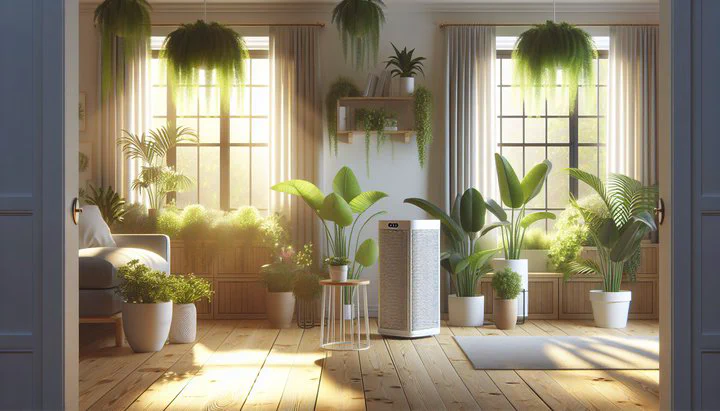How to Keep Allergens from Floating Around in Your Home

Understanding the Sources of Allergens in Your Home
Have you noticed sneezing more at home during certain times of the year? Allergens could be the culprit. Allergens are tiny particles that can make us sneeze, cough, or have itchy eyes. They are a big concern because they float around in our living spaces and can make us feel pretty uncomfortable.
Dust mites, pet dander, pollen, and mold are common allergens. They can easily float around your home, causing sneezes and sniffles. Dust mites love to live in our bedding, carpets, and curtains. They thrive in warm, humid environments and can easily become airborne. Then there’s pet dander, which is made up of tiny flakes of skin from our furry friends. Even if you don’t have pets, dander can still be present if it gets carried in from other places.
Pollen can sneak into your home through windows, doors, and even on your clothes, especially during the spring and summer months. Mold grows in damp areas like bathrooms and basements, and its spores can seriously affect indoor air quality.
Understanding where these allergens come from is the first step in blocking allergens and ensuring they don’t float around in your home, making it a more comfortable place to live.
Practical Steps to Prevent Allergens from Floating Around
Keeping allergens from floating around in your home is easier than you might think. With a few simple steps, you can breathe easier and enjoy a more comfortable living space. Try these practical strategies:
- Regular Cleaning: Dust surfaces with a damp cloth to trap dust particles. Vacuum weekly with a HEPA filter vacuum to capture small particles and allergens.
- Use Air Purifiers: Place air purifiers in the rooms where you spend the most time, like the living room and bedroom, to reduce airborne allergens.
- Proper Ventilation: Open windows on nice days to let fresh air circulate. Use exhaust fans in kitchens and bathrooms to reduce humidity and prevent mold.
- Wash Bedding and Curtains Regularly: Use hot water and a gentle detergent to remove dust mites and other allergens.
By following these practical steps, you’ll be well on your way to blocking allergens and creating a healthier home environment. Remember, consistency is key to ensuring allergens are not floating around and keeping your space comfortable and safe.
Choosing Materials that Block Allergens
When it comes to keeping allergens from floating around in your home, the materials you choose can make a big difference. Some materials are better at blocking allergens and don’t release harmful chemicals that off-gas for months after installation.
- Flooring: Consider hard flooring options like hardwood, tile, or laminate. These materials are easier to clean and don’t harbor allergens as much as carpets do. If you prefer the warmth of a rug, opt for washable rugs.
- Furniture: Choose pieces made with hypoallergenic materials like leather or tightly woven fabric. Look for natural materials that don’t off-gas for months after being brought into your home.
- Bedding and Curtains: Use tightly woven fabrics and hypoallergenic pillow and mattress covers to create a barrier against dust mites. These covers ensure particles to not touch your clothes or skin.
- Paints and Finishes: Opt for low-VOC or VOC-free paints to maintain a healthy environment and ensure allergens are not floating around for long periods.
By choosing the right materials, you can effectively block allergens and create a space that’s healthier and more comfortable.
Preventing Allergens from Settling on Clothes and Surfaces
It’s not just about keeping allergens from floating around; we also need to stop them from settling on our clothes and surfaces. When allergens stick to fabrics and furniture, they can trigger sneezing fits and make our homes less cozy. Try these easy tips today:
- Use Protective Covers: Covers made from hypoallergenic materials can prevent allergens like dust mites from settling. They’re easy to remove and wash.
- Cleaning Products: Use a vacuum cleaner with a HEPA filter and a damp cloth for dusting. Select natural or hypoallergenic cleaning products.
- Laundry Routine: Wash clothes and bedding in hot water and use a gentle, fragrance-free detergent. Dry clothes in a dryer during high pollen seasons.
- Air Purifiers: Place air purifiers in laundry rooms and closets to capture allergens before they settle on clothes or surfaces.
By following these tips, you’ll find it easier to keep allergens from settling on your clothes and surfaces, making your home a healthier, more pleasant place to live.
Long-term Solutions for Allergen Control
Keeping allergens from floating around in your home isn’t just about quick fixes; it’s also about planning for the long haul. By thinking ahead and making some changes, you can enjoy a more comfortable living space all year round. Here are some long-term strategies:
- Home Design Changes: Consider replacing carpets with hard flooring like hardwood, tile, or laminate. Choose washable rugs to keep allergens from settling.
- Regular Maintenance Schedule: Vacuum with a HEPA filter vacuum once or twice a week, dust surfaces with a damp cloth, and wash bedding in hot water weekly.
- Ventilation System: Install exhaust fans in kitchens and bathrooms to reduce humidity and prevent mold growth. Consider a whole-house air filtration system to keep the air clean throughout your home.
- Hypoallergenic Materials: Invest in furniture and paints that don’t off-gas for months after installation to improve indoor air quality.
- Landscaping: Keep pollen-producing plants away from windows and doors. Regularly trim and maintain your garden to reduce pollen entering your home.
By taking these long-term steps, you’ll be better equipped to manage allergens and create a healthier home environment. Remember, a proactive approach will help ensure allergens are not floating around, allowing you to breathe easier and enjoy your space more.
Explore more articles on HomeSolver or share your tips for allergen control in our community. Let’s create healthier homes together!